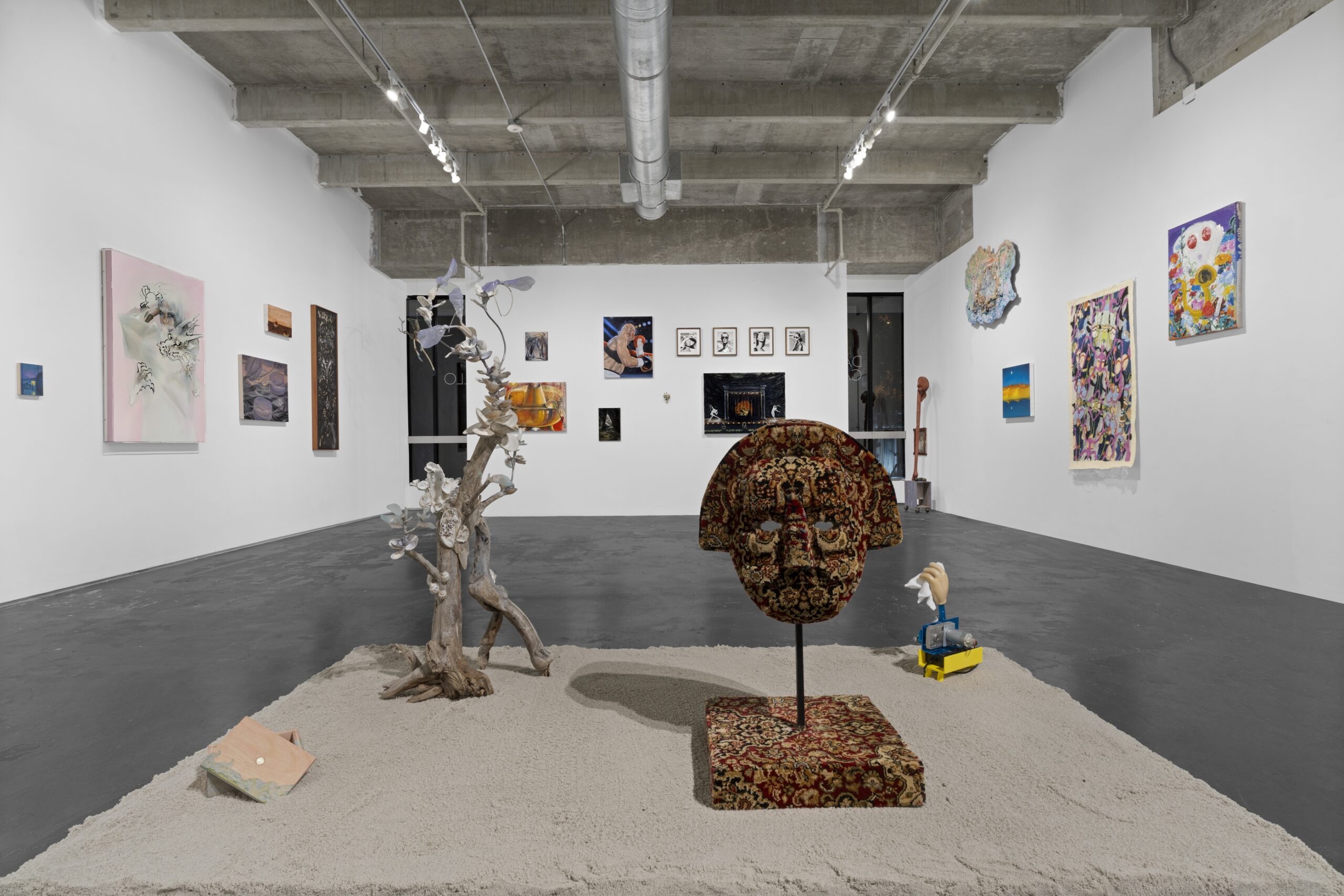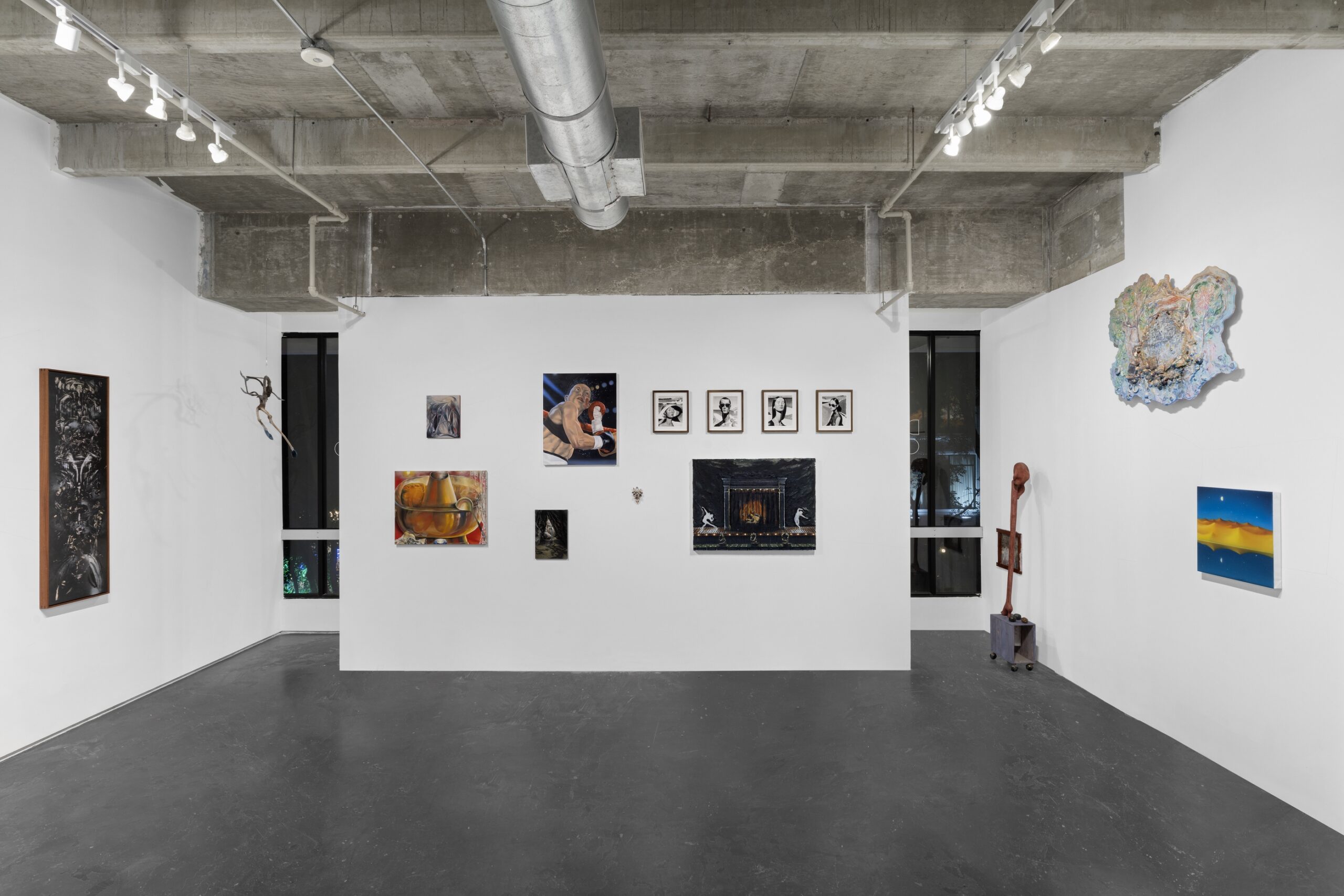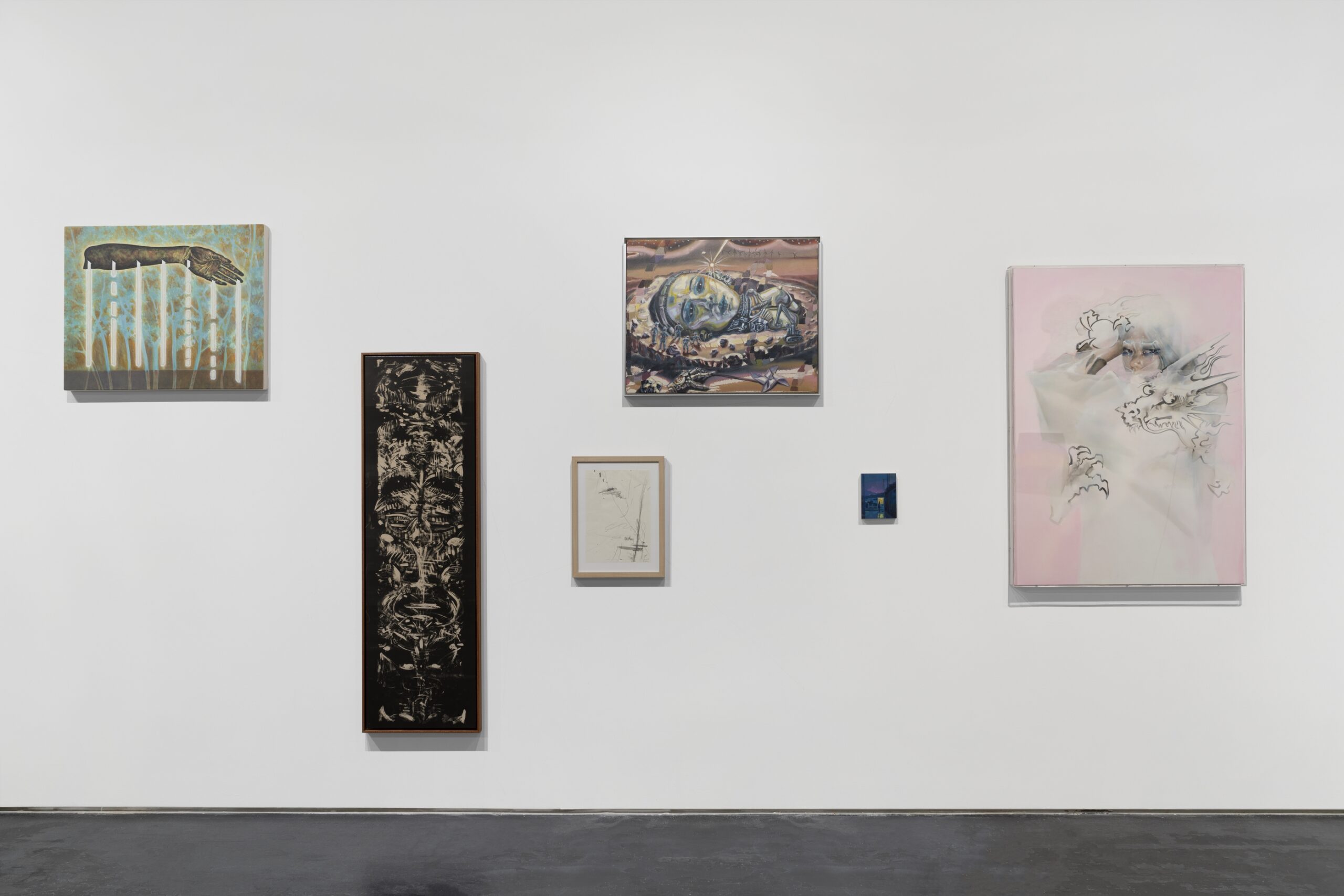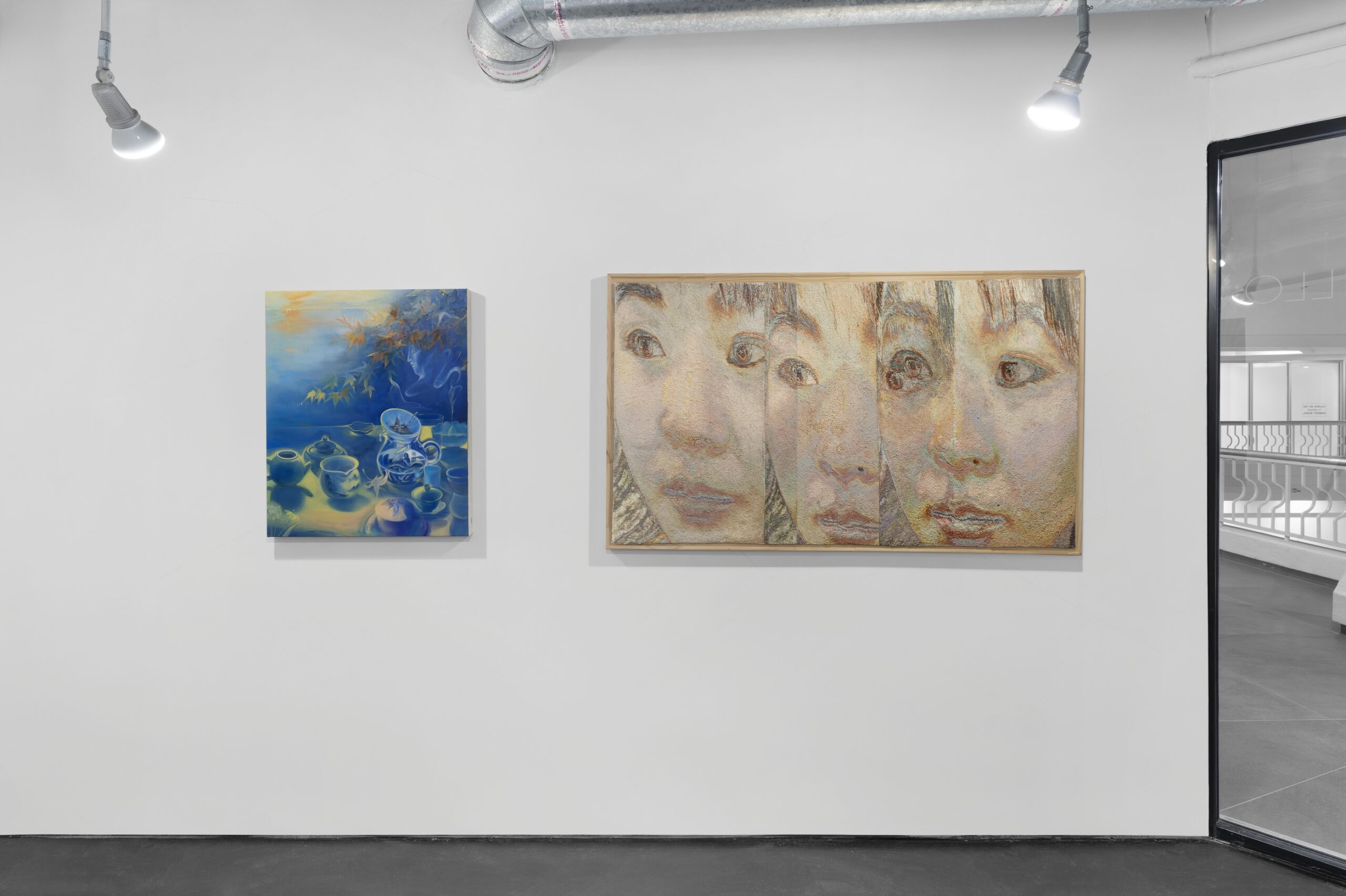Alien
Curated by Yesiyu Zhao
Alien curated by Yesiyu Zhao
The alien is a complex and multifaceted construct, interweaving notions of otherness, estrangement, and the unfamiliar. This exhibition, Alien, curated by gallery artist Yesiyu Zhao, invites over 40 artists from the Asian diaspora, working globally across a diversity of media, to explore and articulate the nuanced meanings associated with the alien and alienation in their myriad forms—spanning cultural, social, and political contexts. The term ‘alien’ here transcends the realm of science fiction, capturing the real and often harsh realities of displacement, immigration, and the pervasive sense of being an outsider in any environment. Through their works, these artists interrogate and illuminate the multifarious dimensions of what it means to be alien in the contemporary world. They offer insights into the lived experiences and existential challenges faced by those who navigate, and perhaps even embrace, the changing and conflicting conditions of being alien.
Developed during the last two years, the exhibition includes artists from numerous cities in Asia, the US and Europe. Works have shipped to Miami from Antwerp, Austin, Bangkok, Beijing, Berlin, Brooklyn, Chicago, Hong Kong, Huangshan, London, Los Angeles, New York, Newark, Seoul, Shanghai, and Tokyo. The exhibition is a historically significant one, as the first survey of the Asian diaspora ever in Miami, in a museum or a gallery. This multi-faceted look at creators from Asia and of Asian descent is timely as the gallery approaches 20 years of innovation in conceptual & artistic discoveries.
“Necessary Likeness
I have always been struck, even tickled, by the forms with which we collectively agree to imagine aliens in sci-fi and popular culture. Nowhere else are the limits of anthropomorphism so obvious: we think ourselves so utterly creative to storyboard out a sentient being with green skin and three eyes and maybe tentacles, yet we possess such a small capacity for questioning why we’d assume an alien would have skin or sight or physical corporeality like us at all. This might be the most endearing -if not ultimately redeeming- habit of humanity: how we cannot help but define the unknown primarily through imagined similarities.”
- Author Delia Cai
List of Artists
Dabin Ahn
Amanda Ba
Delia Cai
Shuyi Cao
HyeGyeong Choi
Zhi Ding
Yuan Fang
Shyama Golden
Asif Hoque
Zhang Huan
Yirui Jia
Ho Jae Kim
Sung Hwa Kim
Song Kun
Antonia Kuo
Heidi Lau
John Hyen Lee
Kyungmin Lee
Mike Lee
Sarah Lee
Susan Lee-Chun
Keita Morimoto
Spun Ngoensritong
Alvin Ong
Catalina Ouyang
Anna Park
Yanqing Pei
Kong Qian
Hiba Schahbaz
Pauline Shaw
Su Su
Nadia Waheed
Kaifan Wang
Xiyao Wang
Lily Wong
Sun Woo
Huidi Xiang
Liu Xin
Xiyadie
Yuri Yuan
Yesiyu Zhao
Ye Qin Zhu
The gallery is donating a portion of its sales to UNICEF.
Alien- Its possibilities and contradictions.
The alien is dislocation, a profound dissonance from familiar surroundings. It is the lived reality of those who traverse borders, both physical and metaphorical, in search of belonging.
The alien is the immigrant. It is the individual negotiating the intricate balance between integrating into a new society and preserving connections to their origins. It is the dual existence marked by the continuous negotiation of cultural allegiance.
The alien is universal. It transcends the experience of immigrants alone, extending into a universal condition. It touches anyone feeling disconnected from the society at-large. It is a state of estrangement that transcends borders and demographics, affecting individuals based on race, ethnicity, gender, sexuality, ability, and other vectors of personal experience and identity. The alien is the universal outsider, confronting disconnection and possibly seeking or rejecting inclusion.
The alien is historical. It is a notion used to justify exclusion and discrimination, perpetuating cycles of marginalization and oppression. It evolves in contemporary society, influenced by globalization, migration, and technological advancements. The alien is a product of these historical legacies and contemporary realities, shaping current experiences of alienation and influencing societal attitudes.
The alien is resilience and agency. It is the strength of individuals navigating the complexities of alienation. Despite the challenges, the alien finds ways to resist, adapt, and thrive. It is the creativity of those forging new identities and communities, highlighting not only struggles but also the possibilities for empowerment and transformation.
The alien is intricately linked to globalization. In an interconnected world, the movement of people, ideas, and cultures creates new forms of hybridity and cross-cultural interaction. The alien is the extrapolation of these dynamics, reflecting the complexities, opportunities, and adversities arising from our globalized world.
The alien is a call for deeper understandings of alienation. It is the acknowledgement of the multifaceted nature of alienation and its impact on individuals and societies. It is a platform for marginalized voices and perspectives, encouraging dialogue and reflection. The alien is a challenge to reconsider perceptions of belonging, opening new possibilities for empathy, connection, and transformation.
In Alien, these themes and digressions provide a nuanced framework for rethinking and recontextualizing the alien/alienated. The exhibition challenges viewers to interrogate their own perceptions of belonging and to contemplate the complexities of navigating the world as individuals who may exist on peripheries—whether by circumstance or choice. By fostering dialogue and reflection, the exhibition serves as a platform to amplify diverse voices, allowing for new narratives to emerge around the concept of the alien. Ultimately, Alien envisions innovative possibilities for community within an increasingly fluid and transformative global landscape.
Alien- Its theoretical underpinnings, tangents, and understandings.
The alien can be understood through the post-colonial concept of orientalism. Edward Said’s canonical text, Orientalism, dissects the Western construction of Eastern identities. It examines the stereotypes and cultural narratives that shape the perception of non-Western identities in the West, revealing the insidious effects of these cultural misconceptions.
“The Orient, in short, viewed as a geographical and cultural entity, is almost a European invention, and had been since antiquity a place of romance, exotic beings, haunting memories and landscapes, remarkable experiences.” (p. 1)
“The imaginative examination of things Oriental was based more or less exclusively upon a sovereign Western consciousness out of whose unchallenged centrality an Oriental world emerged.” (p. 58)
- Edward W. Said, Orientalism. New York: Pantheon Books, 1978.
The alien can be understood through the post-colonial concept of “unhomeliness.” Articulated by Homi K. Bhabha, unhomeliness captures the condition of being caught between cultures, of not feeling at home– a common experience for diasporic individuals. The alien is the cultural displacement that fragments one’s sense of home, rendering it perpetually unsettled.
“It is precisely in these banalities that the unhomely stirs, as the violence of a racialized society falls most enduringly on the details of life: where you can sit, or not; how you can live, or not; what you can learn, or not; who you can love, or not. Between the banal act of freedom and its historic denial rises the silence…” (p. 21)
- Homi K. Bhabha, The Location of Culture. London: Routledge, 1994.
The alien can be understood through the cyberfeminist archetype of the cyborg. The cyborg is a hybrid entity that challenges traditional boundaries between human and machine, nature and culture. Donna Haraway’s “A Cyborg Manifesto” envisions the cyborg as a figure at the intersection of different cultural and technological influences, emphasizing the beauty of “imperfect” translations and the potential for new forms of understanding and expression.
“The boundary between science fiction and social reality is an optical illusion.”
“The cyborg is a kind of disassembled and reassembled, postmodern collective and personal self.”
“By the late twentieth century, our time, a mythic time, we are all chimeras, theorized and fabricated hybrids of machine and organism—in short, cyborgs.”
“There are several consequences to taking seriously the imagery of cyborgs as otherness and alienation. There is a possibility of transcending the history of antagonistic dualisms between mind and body, animal and human, organism and machine, public and private, nature and culture, men and women.”
- Donna Haraway, “A Cyborg Manifesto: Science, Technology, and Socialist-Feminism in the Late Twentieth Century.” In Simians, Cyborgs and Women: The Reinvention of Nature, pp. 149-181. New York: Routledge, 1991.
The alien can be understood through queer theory and the concept of disidentification. As articulated by José Esteban Muñoz, disidentification is a strategy that navigates between assimilation and opposition to dominant cultural narratives. This strategy allows the disidentifying subject to contest and survive within oppressive societal structures, revealing exclusionary mechanisms while creating space for minority identities. Through disidentification, one can transform alienation into a site of critical engagement and potential empowerment.
“Disidentification is meant to be descriptive of the survival strategies the minority subject practices in order to negotiate a phobic majoritarian public sphere that continuously elides or punishes the existence of subjects who do not conform to the phantasm of normative citizenship.” (p. 4)
“At times, resistance needs to be pronounced and direct; on other occasions, queers of color and other minority subjects need to follow a conformist path if they hope to survive a hostile public sphere. But for some, disidentification is a survival strategy that works within and outside the dominant public sphere simultaneously.” (p. 5)
“…disidentification is a strategy that resists a conception of power as being a fixed discourse. Disidentification negotiates strategies of resistance within the flux of discourse and power. It understands that counter discourses, like discourse, can always fluctuate for different ideological ends…” (p. 19)
- José Esteban Muñoz, Disidentifications: Queers of Color and the Performance of Politics. Minneapolis: University of Minnesota Press, 1999.
Dabin Ahn
Amanda Ba
Delia Cai
Shuyi Cao
HyeGyeong Choi
Zhi Ding
Yuan Fang
Shyama Golden
Asif Hoque
Zhang Huan
Yirui Jia
Ho Jae Kim
Sung Hwa Kim
Song Kun
Antonia Kuo
Heidi Lau
John Hyen Lee
Kyungmin Lee
Mike Lee
Sarah Lee
Susan Lee-Chun
Keita Morimoto
Spun Ngoensritong
Alvin Ong
Catalina Ouyang
Anna Park
Yanqing Pei
Kong Qian
Hiba Schahbaz
Pauline Shaw
Su Su
Nadia Waheed
Kaifan Wang
Xiyao Wang
Lily Wong
Sun Woo
Huidi Xiang
Liu Xin
Xiyadie
Yuri Yuan
Yesiyu Zhao
Ye Qin Zhu



























